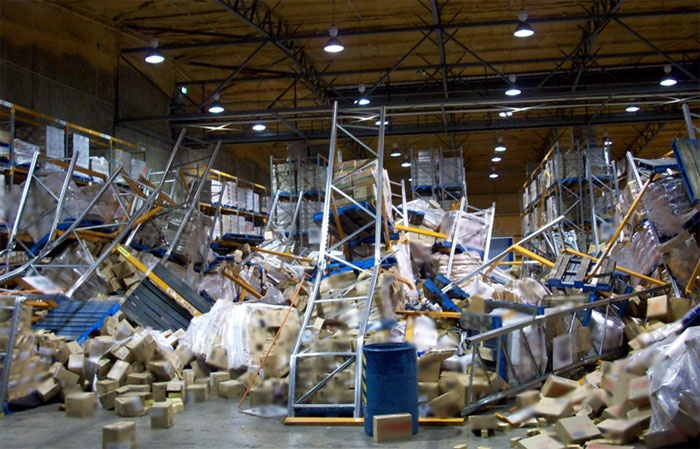The primary function of a warehouse is to storage and ship goods as per business requirements. Hence, the most important aspect in the warehouse is how the storage is done. There are various storing methods and storage systems available. Let us discuss few basic and popular ones to get a fair understanding of their merits and demerits.
- Block Stacking
It is one of the outdated forms of storages in which loaded pallets are stacked one on top of the other on flat surfaces, preferably floors, to a maximum stable storage height. The pallets that do not require any kind of storage equipment can be accessed on a LIFO (Last In First Out) basis and this method can be impaired by honeycombing. As you can storage only 3-4 levels max in this type of storage, the utilization of height /cubic space in the warehouse is limited. The bottom level storage material is usually gets bulged due to multiple loads on it. Hence, possibility for material damage in this form of storage is very high.
- Stacking frames
In this method, the material damage can be minimized to certain level but can’t avoided. Here, the pallet racks allow themselves not only to be stacked, but also moved around the warehouse. This is why this method does not support the need to have a towering storage system. Here again, honeycombing can be achieved in the same way as it is done in the case of Block Stacking. It also limit the levels of storage, hence, cubic space utilization is compromised.
- Single-Deep pallet racking
This is simple and most widely used pallet storage racks in multiple industries. It allows the racking system to be adjusted with respect to the height of each loading level. It has the lowest pallet storage capacity at the lowest cost per square meter racking. It provides 100% accessibility to all pallet locations. When a pallet is removed, it makes space available for the new pallet to be stored. While this system does not encounter any issue concerning honeycombing, it requires adequate floor space to create navigable aisles.
- Double-Deep pallet racking
In this system, the pallet racks are arranged in a similar manner as the single-deep pallet racking, except that instead of one storage rack on an aisle, there are two racks deep. This storage racks configuration significantly increases the storage capacity with reduction in number of aisles. It requires double reach truck or special material handling equipment to store and retrieve pallets from the racking.
- Drive-in rack
This heavy duty racking system is similar to the block stacking method in the sense that it follows the LIFO method of retrieval. In this racking system, the pallets are stored on the cantilever rails fixed on the upright posts. As forklift is driven into the storage system to store and retrieve pallets, it has limited space to maneuver and increases the time taken to storage and retrieve pallets.
- Multi-tier shelving
This racking system, built at multiple levels, efficiently maximizes the utilization of the vertical space in the warehouse. Each storage level is accessible by walk ways/ floors, staircases, main aisles and cross aisles. Gravity chutes, goods cum passenger lifts and conveyor automates the movements of goods and warehouse employees. These handling systems not only ensure optimal utilization of the available space but also help businesses achieve high throughput of material storage and retrieval as material is stacked and picked at multiple levels at the same time.
- Mezzanine Floor
Mezzanine floor system is capable of optimizing existing warehouse operations without being dependent on the availability of large floor spaces. It is temporary structure with no load on building columns. Hence, it gives lot of flexibility for the business. The additional space created by Mezzanine floor is cost effective compared to the permanent civil structure. The new space can be used for several functions such as material storage, office, value added service etc. What’s more, it can be customized to suit the unique needs of warehouses in terms of spaces and operations. Mezzanine floor manufacturers provide consultative solutions unique to your business requirement.
So far, we’ve covered widely used storage systems. There are semi-automated and fully automated storage and retrieval systems to help businesses to gain the competitive edge. The storage system selection is purely dependent on warehouse specs, business objectives and challenges.




